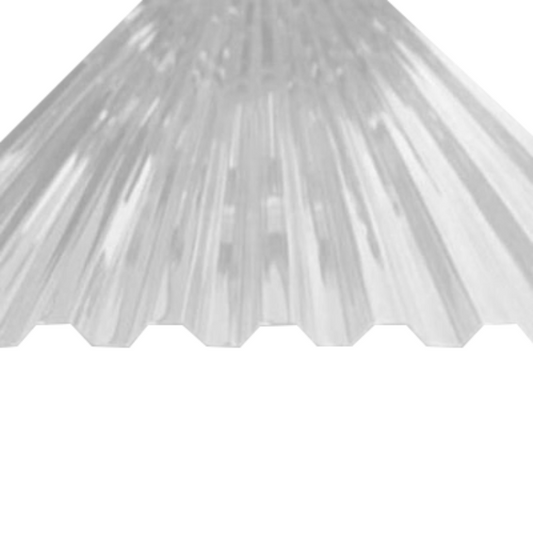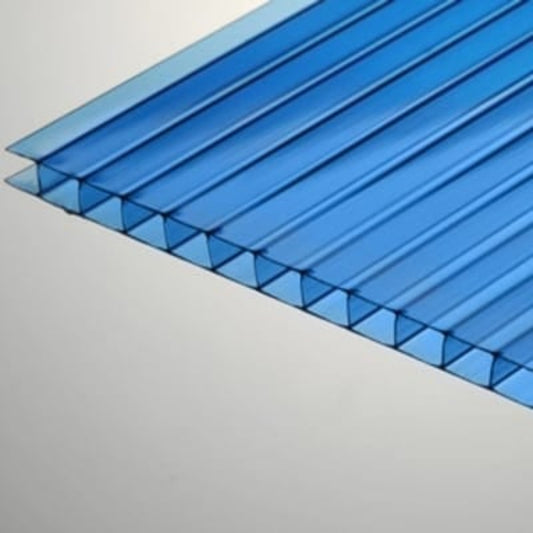-
Twinwall Polycarbonate Sheet - All Sizes
Vendor:Roofing4US PolycarbonatefromRegular price $41.78Sale price $41.78 Regular priceUnit price per
Polycarbonate Pergola Covers | Polycarbonate Patio Covers | Cover | Shade
Welcome to the Polycarbonate Pergola Covers section on Roofing4us.com! Our selection is crafted to transform your outdoor spaces into elegant and functional havens, fit for any weather. With our polycarbonate covers, not only do you get protection from the elements, but also a beautiful diffusion of natural light. Let’s dive into the different types available and guide you to make the right choice for your pergola.
Types of Polycarbonate Pergola Covers
Clear Hammered Sheet
Description: The clear hammered sheet offers a distinctive look that combines clarity with a textured finish. Perfect for those who desire a unique touch to their pergola, this cover effectively blends aesthetics with functionality. Its even light diffusion creates a soft ambiance while ensuring UV protection.
Greca Polycarbonate Corrugated Clear Roofing Sheet
Description: The Greca style of roofing is defined by its wave-like corrugation. This design not only enhances structural strength but also adds a decorative element. Given its clear finish, it allows maximum sunlight while safeguarding your outdoor space from rain and harmful UV rays.
Multiwall Polycarbonate Sheet
Description: Multiwall sheets consist of multiple layers, making them ideal for insulation. They trap air between the layers, providing an insulating effect. This design reduces heat in summers and retains warmth during winters, making your pergola comfortable year-round.
Twinwall Polycarbonate Sheet
Description: Twinwall sheets are a subset of the multiwall category but feature two layers. This makes them lighter and often more budget-friendly than thicker multiwall options. They still offer good insulation and are perfect for those seeking a balance between cost and performance.
Selecting the Right Cover:
When choosing a polycarbonate pergola cover, consider the following:
Purpose: If insulation is a priority, opt for Multiwall or Twinwall sheets. For aesthetic appeal, the Clear Hammered Sheet or Greca style might be more suitable.
Budget: Prices vary with the complexity of the design and its insulating properties. Determine what matters more - a unique design, insulation, or budget-friendliness.
UV Protection: All our polycarbonate covers offer UV resistance, ensuring protection from harmful sun rays.
Maintenance: Polycarbonate covers are generally low-maintenance, but some textures and designs might require occasional cleaning to maintain clarity.
Polycarbonate Pergola Covers
Polycarbonate pergola covers are a popular and practical choice for enhancing pergola structures. These covers are crafted from polycarbonate sheets, a versatile and durable material that offers numerous benefits for pergolas:
Weather Resistance: Polycarbonate sheets are highly resistant to various weather conditions, including UV rays, rain, and hail. They provide reliable protection for the pergola and its occupants.
UV Protection: Polycarbonate pergola covers offer excellent UV protection, shielding you and your outdoor furniture from harmful rays, reducing the risk of sunburn, and preventing fading of fabrics and materials.
Transparency: Polycarbonate sheets are transparent, allowing natural light to pass through. This creates a well-lit and inviting space beneath the pergola while maintaining a connection with the outdoors.
Impact Resistance: Polycarbonate is known for its impact resistance, making it a durable option for covering pergolas. It can withstand accidental impacts and is less likely to break or crack compared to glass or other materials.
Lightweight: Despite their strength, polycarbonate sheets are relatively lightweight, making them easier to handle and install compared to heavier materials.
Design Versatility: Polycarbonate pergola covers are available in various colors, opacities, and thicknesses, offering design flexibility to match your pergola's style and personal preferences.
Heat Regulation: Some polycarbonate sheets come with insulating properties, helping to regulate the temperature under the pergola. This creates a comfortable and enjoyable outdoor space in various weather conditions.
When installing polycarbonate pergola covers, it's essential to ensure proper support for the sheets and follow the manufacturer's guidelines for installation. Proper installation will ensure that the pergola covers provide optimal protection and longevity for your outdoor space.
Polycarbonate Patio Cover
A polycarbonate patio cover is a roofing structure constructed using polycarbonate sheets, intended to enhance and protect your patio area. This type of patio cover offers numerous advantages for outdoor living spaces:
Weather Protection: Polycarbonate patio covers offer reliable shielding against various weather conditions, such as UV rays, rain, hail, and snow. They safeguard your patio and its furniture, allowing you to enjoy the outdoors comfortably.
UV Resistance: Polycarbonate sheets provide excellent UV protection, reducing the risk of sunburn and preventing your patio furniture and decorations from fading due to prolonged sunlight exposure.
Natural Light: The transparent nature of polycarbonate allows natural sunlight to pass through, brightening the covered patio area and maintaining an open and airy atmosphere.
Durability: Polycarbonate is renowned for its impact resistance, making it a durable choice for patio covers. It can withstand accidental impacts and is less susceptible to breakage or cracking compared to glass.
Lightweight: Despite its strength, polycarbonate is relatively lightweight, making it easier to handle during installation and placing less strain on the patio structure.
Design Versatility: Polycarbonate patio covers are available in various colors, opacities, and thicknesses, providing design flexibility to match your patio's style and complement your outdoor decor.
Heat Regulation: Some polycarbonate sheets come with insulating properties, helping to regulate the temperature under the patio cover. This creates a more comfortable outdoor space, particularly during hot or cold weather.
Low Maintenance: Polycarbonate patio covers require minimal maintenance. Regular cleaning with mild soap and water is usually sufficient to keep them looking clear and transparent.
Is polycarbonate good for patio cover?
Yes, polycarbonate is an excellent material for a patio cover. It offers several advantages that make it a popular choice for this application:
Weather Resistance: Polycarbonate is highly resistant to various weather conditions, including UV rays, rain, and hail. This makes it a durable option for protecting your patio from the elements.
UV Protection: Polycarbonate provides excellent UV protection, shielding you and your outdoor furniture from harmful sun rays. This helps reduce the risk of sunburn and prevents fading of fabrics and materials.
Transparency: Polycarbonate sheets are transparent, allowing natural light to pass through. This creates a well-lit and inviting outdoor space while still protecting you from direct sunlight.
Impact Resistance: Polycarbonate is known for its high impact resistance. It can withstand accidental impacts and is less likely to break or crack compared to glass or other materials.
Lightweight: Despite its strength, polycarbonate is relatively lightweight, making it easier to handle and install compared to heavier materials.
Design Versatility: Polycarbonate sheets come in various colors, opacities, and thicknesses, providing design flexibility to match your patio's aesthetics and style.
Heat Regulation: Some polycarbonate sheets have insulating properties, helping to regulate the temperature under the patio cover. This creates a more comfortable outdoor space in different weather conditions.
Low Maintenance: Polycarbonate patio covers require minimal maintenance. Regular cleaning with mild soap and water is usually sufficient to keep them looking clear and transparent.
When using polycarbonate for a patio cover, it's essential to ensure proper support for the sheets and follow the manufacturer's guidelines for installation. This will ensure that your patio cover provides optimal protection and serves as a functional and attractive addition to your outdoor space.
Do polycarbonate gazebos provide shade?
Yes, polycarbonate gazebos offer shade. Polycarbonate is a transparent material that comes in different opacities. When used for gazebo roofing, polycarbonate sheets can effectively block a significant amount of sunlight, providing shade and protection from direct sunlight.
The degree of shade provided by polycarbonate gazebos may vary depending on the type of polycarbonate used. Clear or transparent polycarbonate sheets offer some shade while still allowing natural light to brighten the space beneath the gazebo. On the other hand, tinted or colored polycarbonate sheets can offer increased shade by reducing the amount of sunlight that passes through.
Polycarbonate gazebos strike a balance, allowing you to enjoy the outdoors while staying protected from the sun's harmful UV rays. They create a comfortable and shaded area for relaxation, dining, or entertainment without direct exposure to intense sunlight. This makes polycarbonate gazebos an ideal choice for enhancing your outdoor living space and enjoying the beauty of the outdoors while remaining sheltered from the sun
What is the most durable roofing system?
The most durable roofing system depends on various factors, including the materials used, the quality of installation, and the specific environmental conditions the roof will face. However, there are some roofing materials that are generally renowned for their exceptional durability and long-lasting performance:
Metal Roofing: Metal roofs, such as steel or aluminum, are highly durable and can withstand harsh weather conditions like high winds, heavy rain, and hail. They are fire-resistant and do not rot or decay. With proper maintenance, metal roofs can last for 50 years or more.
Concrete and Clay Tiles: Concrete and clay tiles are durable and have a long lifespan, often lasting 50 to 100 years or more. They are resistant to fire, pests, and weathering, making them suitable for various climates.
Slate Roofing: Slate roofs are considered one of the most durable roofing options, with a lifespan of over 100 years if well-maintained. Slate is a natural stone material that is highly resistant to fire, water, and extreme temperatures.
Synthetic Roofing Materials: Certain synthetic roofing materials, like synthetic slate or composite shingles, offer a balance of durability and cost-effectiveness. They imitate the appearance of natural materials while providing better resistance to impacts and weathering.
Metal Shingles: Metal shingles are a popular choice due to their durability and versatility. They can mimic traditional roofing materials like wood, tile, or slate while offering the benefits of metal, such as fire resistance and long life.
While these roofing systems are considered highly durable, it's essential to remember that proper installation, regular maintenance, and adherence to the manufacturer's guidelines are crucial to maximizing their lifespan.
Are polycarbonate roof panels a good choice for a roofing system?
Yes, polycarbonate roof panels are indeed a good choice for a roofing system in many situations. They offer a range of benefits that make them an attractive option for various applications:
Durability: Polycarbonate roof panels are highly durable and resistant to impacts, making them suitable for areas prone to hail or falling objects. They can withstand harsh weather conditions, ensuring long-lasting performance.
Weather Resistance: Polycarbonate panels are designed to endure UV rays, rain, snow, and high winds, making them a reliable choice for different climates.
Lightweight: Polycarbonate panels are lightweight, which reduces the load on the roof structure and makes installation easier and more cost-effective.
Transparency: Depending on the type of polycarbonate, these panels can offer varying levels of transparency or translucency, allowing natural light to enter the building. This feature helps create a well-lit and inviting indoor environment.
UV Protection: Polycarbonate roof panels provide excellent UV protection, safeguarding the interior of the building and its occupants from harmful sun rays.
Energy Efficiency: Some polycarbonate panels come with additional thermal insulation properties, contributing to improved energy efficiency and temperature regulation inside the building.
Design Flexibility: With various colors, profiles, and opacities available, polycarbonate panels offer design flexibility to match different architectural styles and aesthetic preferences.
Longevity: When properly installed and maintained, polycarbonate roof panels have a long lifespan, providing enduring protection and value to the building.
However, it's essential to consider the specific needs and conditions of your building before deciding on polycarbonate roof panels. While they are an excellent choice for many projects, their suitability may vary depending on factors such as local climate, architectural design, budget, and intended use.

 Rated Excellent
Rated Excellent


